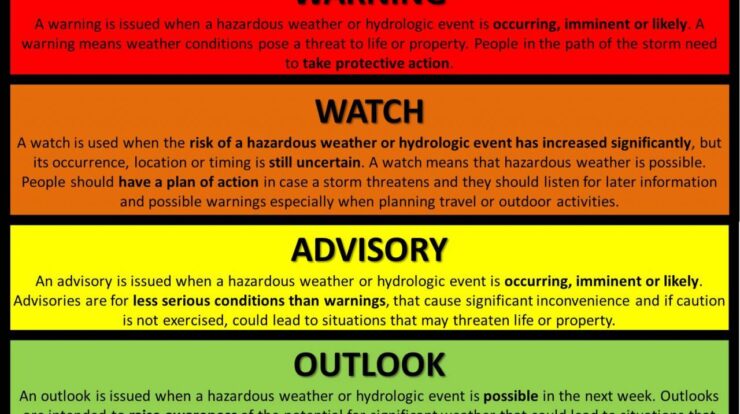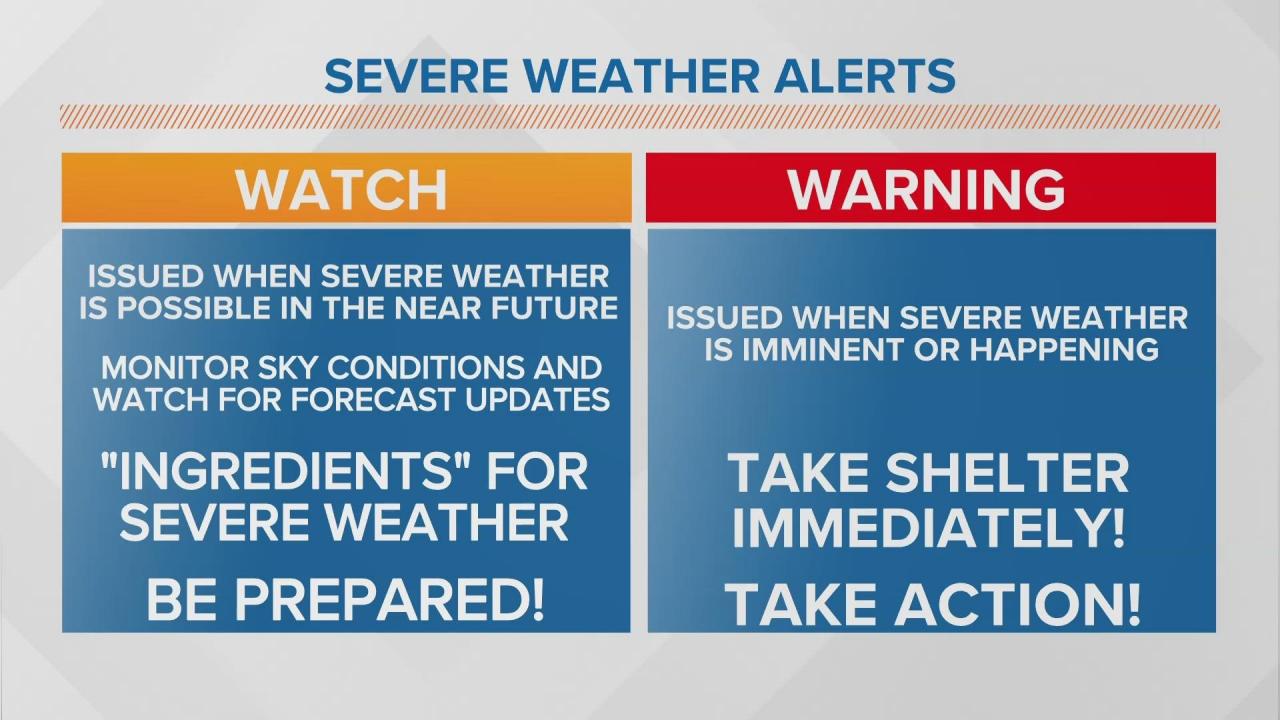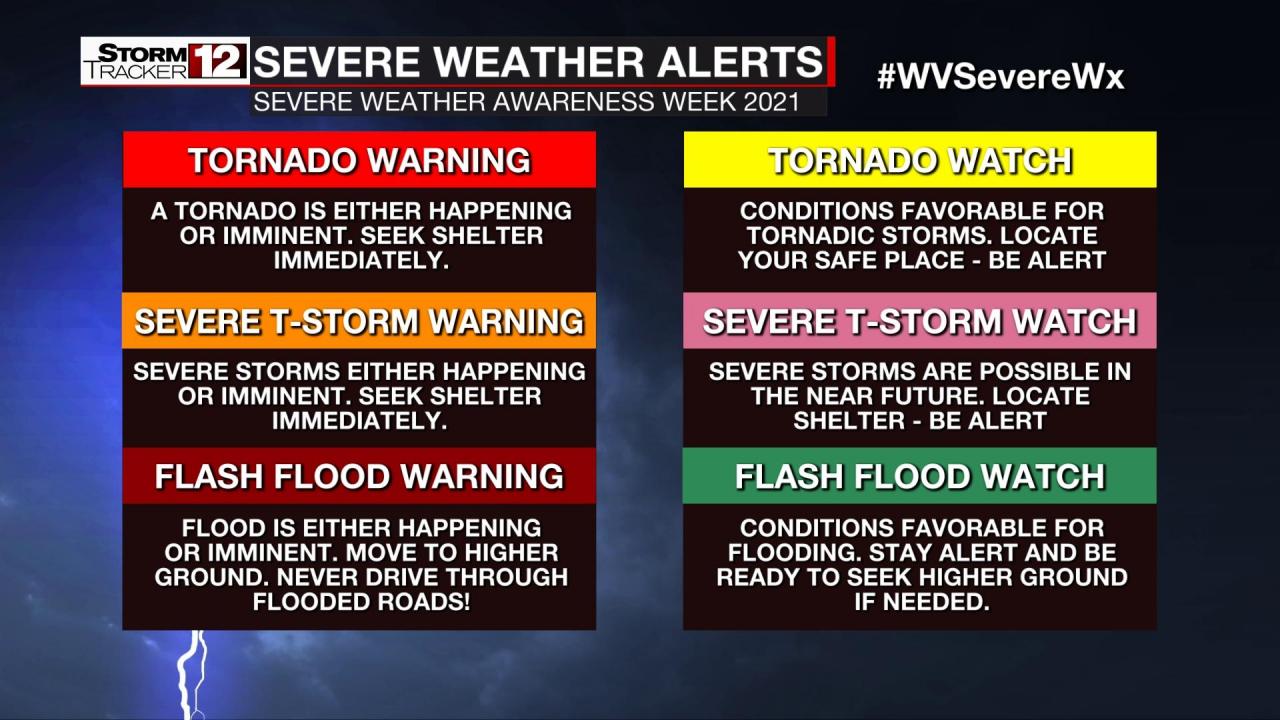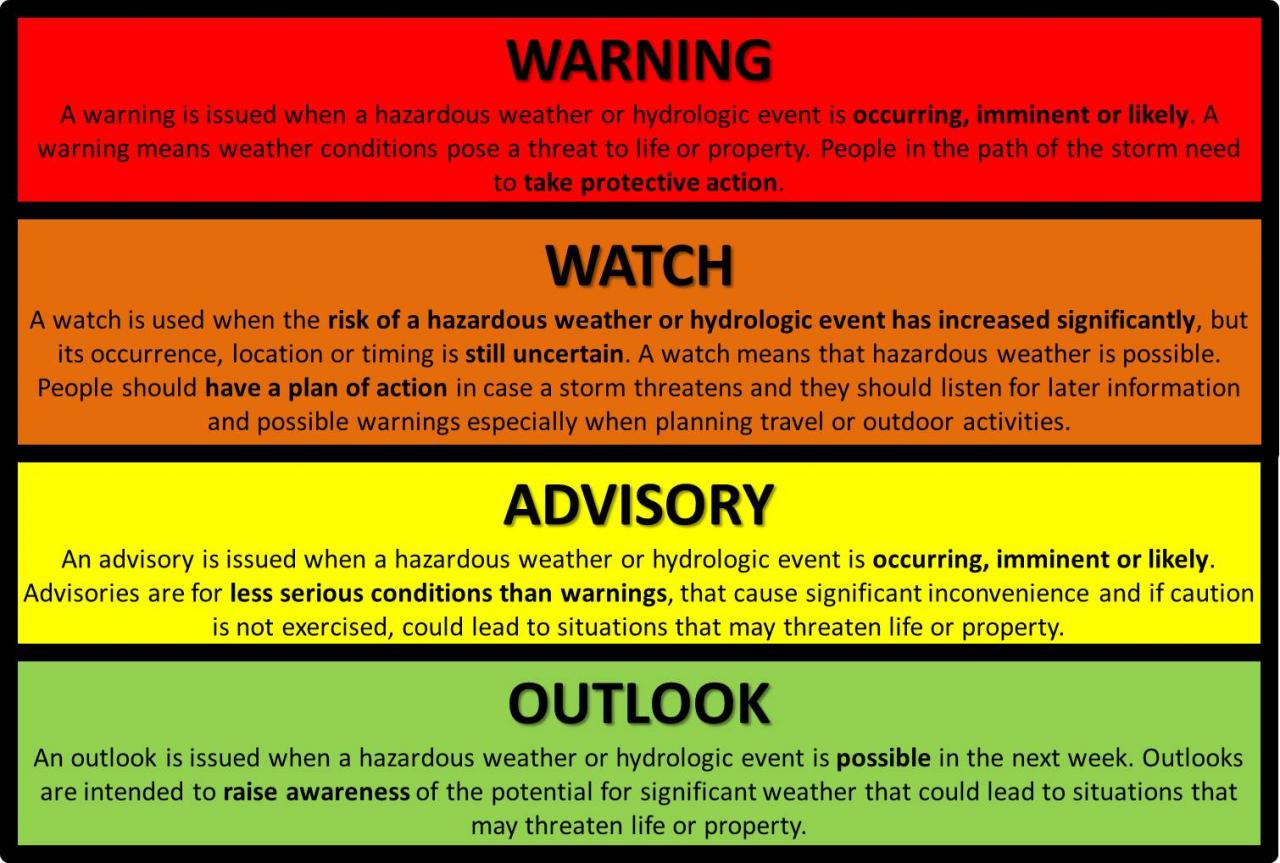
Difference between watch and warning – In the realm of emergency preparedness, the distinction between a watch and a warning is crucial. Understanding the difference between these alerts can help individuals and communities stay informed and take appropriate action during hazardous events.
Watches and warnings are issued by authorized organizations based on specific criteria, and each type of alert carries its own implications and preparedness measures. This article delves into the key differences between watches and warnings, their issuing authorities, and the impact they have on individuals and communities.
The King’s Day in the Netherlands is a vibrant celebration of history, culture, and community. This annual event, also known as Koningsdag, commemorates the birth of King Willem-Alexander and showcases the country’s rich heritage through music, parades, and festive gatherings.
The festivities bring together people from all walks of life, fostering a sense of unity and pride in their Dutch identity.
1. Definitions and Distinctions

Watches and warnings are two distinct types of alerts issued by weather forecasting agencies to inform the public about potential or ongoing hazardous weather conditions. While both are intended to raise awareness and promote safety, they differ in their severity and the actions they prompt.
The Netherlands Kings Day is a testament to the enduring spirit of the Dutch people. It is a time for reflection, celebration, and a reminder of the country’s resilience in the face of adversity. As the nation comes together to honor their monarch, they also celebrate the strength of their community and the vibrant tapestry of their culture.
A watch is issued when weather conditions are favorable for the development of severe weather, but it is not yet imminent. It serves as a heads-up for individuals to monitor the situation and stay informed about any potential threats.
On the other hand, a warning is issued when severe weather is either occurring or is expected to occur within the next hour. It urges immediate action, such as seeking shelter or taking other necessary precautions to protect life and property.
To illustrate the difference, consider a thunderstorm watch. This indicates that conditions are right for thunderstorms to develop, but they may not actually occur. A thunderstorm warning, however, means that thunderstorms have been detected or are radar-indicated and are approaching the area.
2. Issuing Authorities and Responsibilities
In most countries, watches and warnings are issued by national meteorological or weather forecasting agencies. These agencies are responsible for monitoring weather conditions, collecting data, and issuing alerts to the public.
The specific organization responsible for issuing watches and warnings may vary depending on the country or region. For example, in the United States, the National Weather Service (NWS) is the primary agency responsible for issuing these alerts.
These agencies use a variety of communication channels to disseminate watches and warnings, including:
- Television and radio broadcasts
- Weather websites and mobile apps
- Social media
- NOAA Weather Radio
3. Impact and Preparedness
Watches and warnings can have a significant impact on individuals and communities. They can disrupt daily routines, cause property damage, and even threaten lives.
When a watch is issued, it is important to stay informed about the situation and be prepared to take action if a warning is issued. This may involve having an emergency plan in place, gathering essential supplies, and identifying a safe place to shelter.
When a warning is issued, it is crucial to take immediate action to protect yourself and others. This may involve seeking shelter in a sturdy building, avoiding flooded areas, and following the instructions of local authorities.
Public education and awareness are essential for ensuring that individuals and communities are prepared for watches and warnings. Weather forecasting agencies and emergency management organizations often conduct public outreach programs to educate the public about the different types of alerts and how to respond to them.
4. Case Studies and Historical Examples

Numerous real-world examples of watches and warnings have been issued throughout history, with varying degrees of effectiveness.
One notable example is the 2012 derecho that swept across the Midwest and Eastern United States. The NWS issued numerous watches and warnings in advance of the storm, which helped to minimize the number of casualties.
However, there have also been instances where watches and warnings have not been issued in a timely manner, or have not been heeded by the public. One such example is the 1998 tornado outbreak in Alabama, which killed 32 people and caused widespread damage.
These examples highlight the importance of effective communication and public education in ensuring that watches and warnings are received and acted upon in a timely manner.
Ending Remarks: Difference Between Watch And Warning

By understanding the difference between watches and warnings, individuals can make informed decisions about their safety and well-being during emergencies. Public education and awareness play a vital role in ensuring that communities are prepared to respond effectively to these alerts and mitigate potential risks.
Frequently Asked Questions
What is the primary difference between a watch and a warning?
In contrast to the joyous celebrations of the Elkhorn Nebraska Tornado , the recent tornado that devastated Lincoln, Nebraska, left a trail of destruction and heartbreak. The community is now facing the daunting task of recovery and rebuilding, and they will need all the support they can get.
Let’s come together to help those affected by this devastating storm.
A watch indicates the potential for a hazardous event, while a warning signifies that the event is imminent or already occurring.
Who is responsible for issuing watches and warnings?
Watches and warnings are typically issued by government agencies such as the National Weather Service or local emergency management offices.
How are watches and warnings communicated to the public?
Alerts are disseminated through various channels, including television, radio, social media, and mobile phone notifications.





